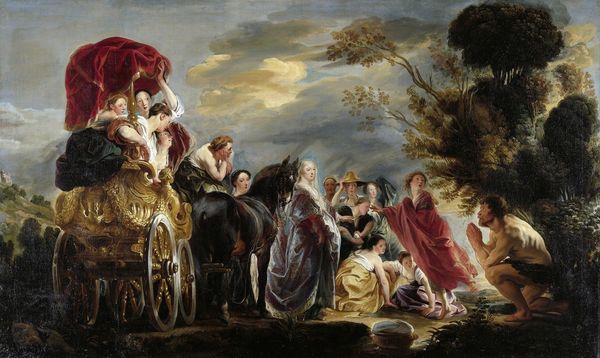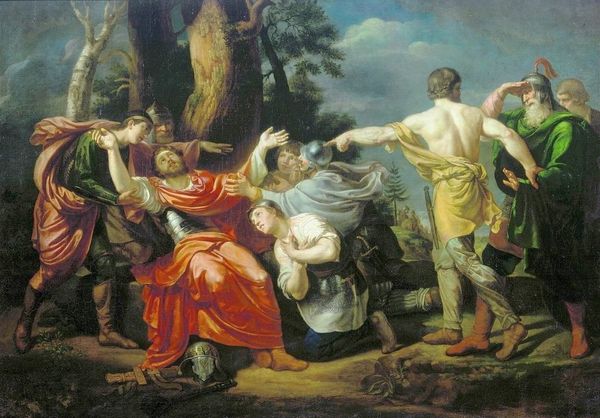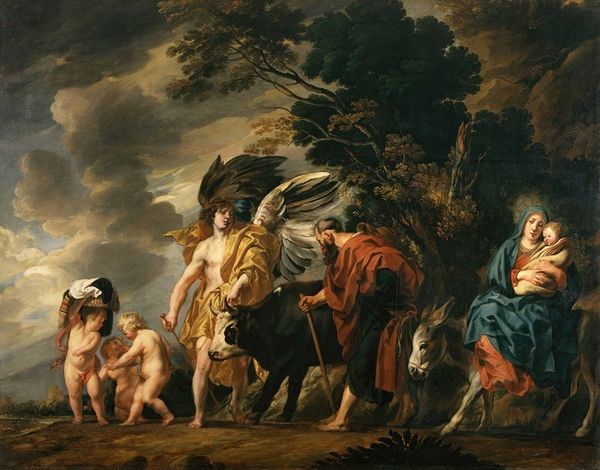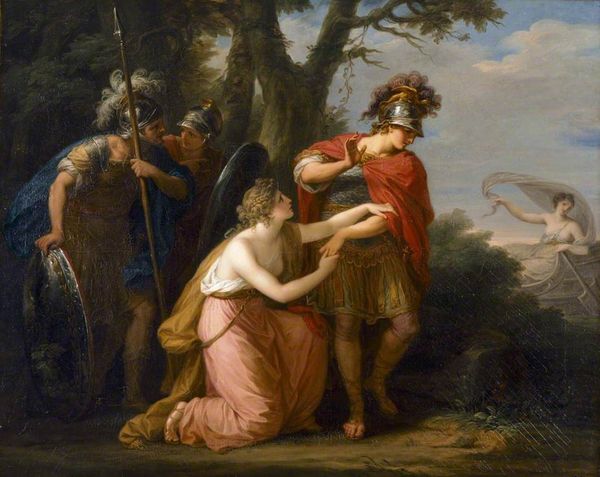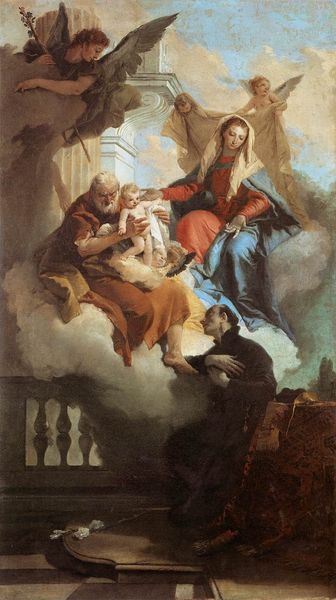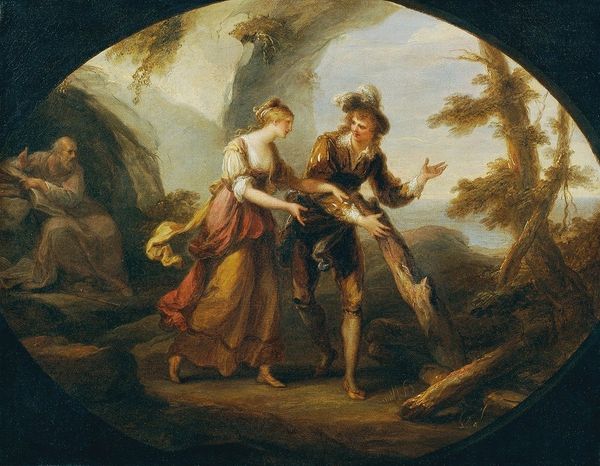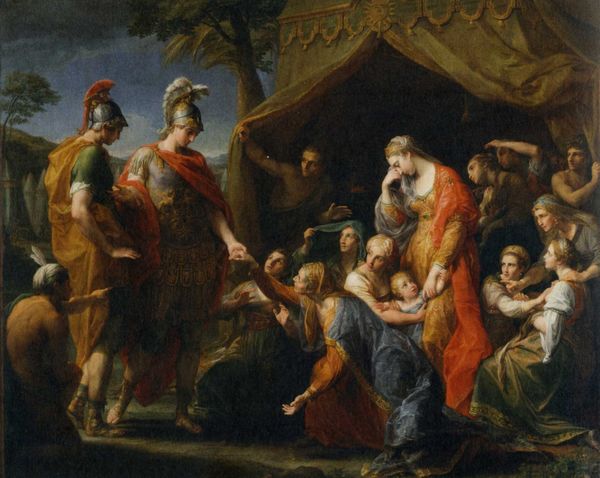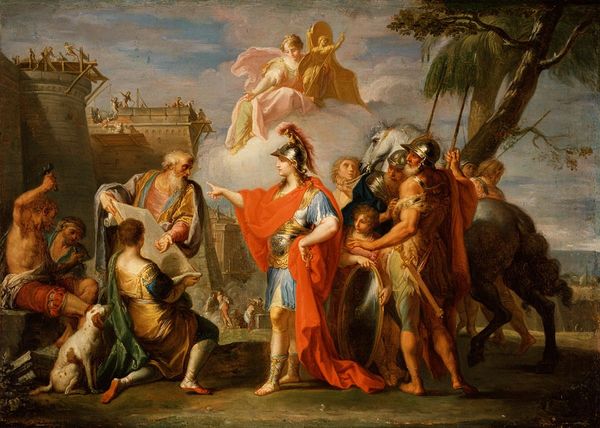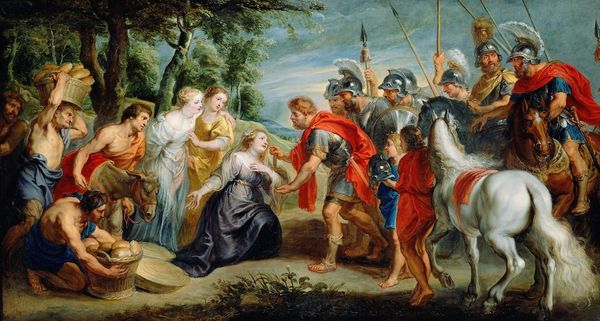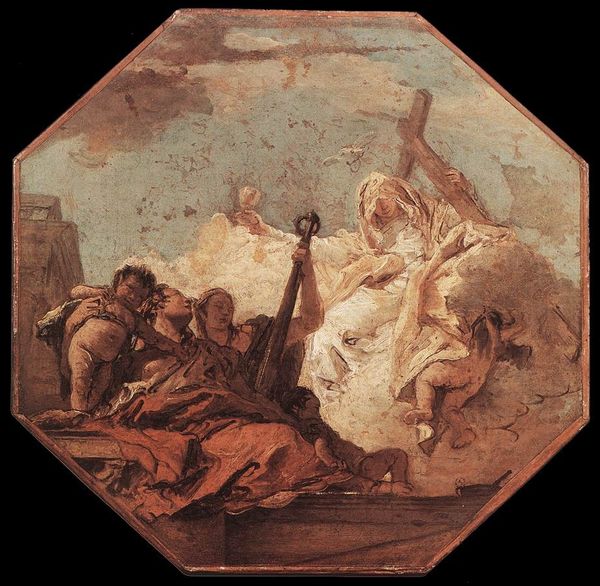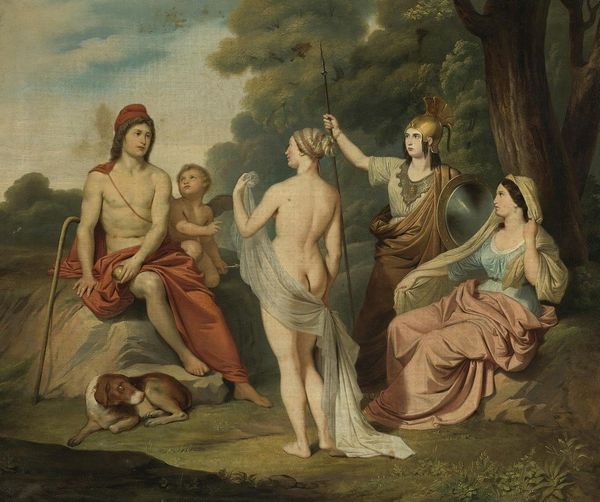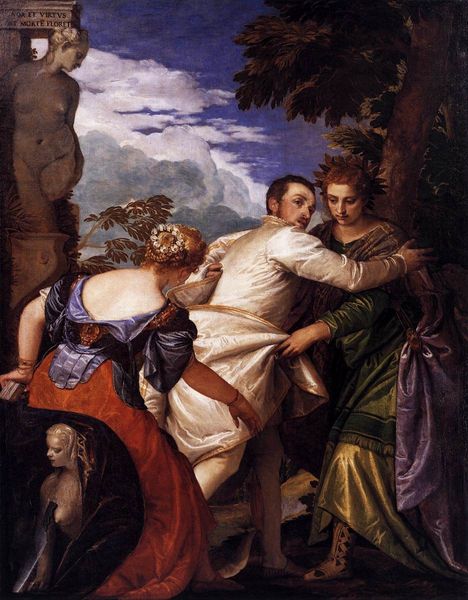
Dimensions: 275 x 190 cm
Copyright: Public domain
Goya painted ‘The Maja and the Masked Men’ without a commission, perhaps to express something deeply felt. Here, the masks worn by the men take centre stage. Masks have a long lineage, stretching back to ancient rituals. In antiquity, they served to both conceal and reveal, allowing the wearer to embody spirits or deities, transcending the boundaries of the self. The tradition continues in the carnivals and masquerades of Europe. The masks here suggest a world of hidden identities. This harkens back to the Roman tradition of the persona: the mask worn by actors that signifies their role. But these masks also create distance, suggesting the complexities of social interaction, the games people play, and the hidden motivations that drive our actions. There is something unnerving about them, especially when contrasted with the maja’s exposed face. Consider the psychological weight of these concealed identities. What anxieties or desires are projected through these masks? Like the motifs in dreams, they draw from a deep well of collective memory, resurfacing in different guises across time.
Comments
No comments
Be the first to comment and join the conversation on the ultimate creative platform.
